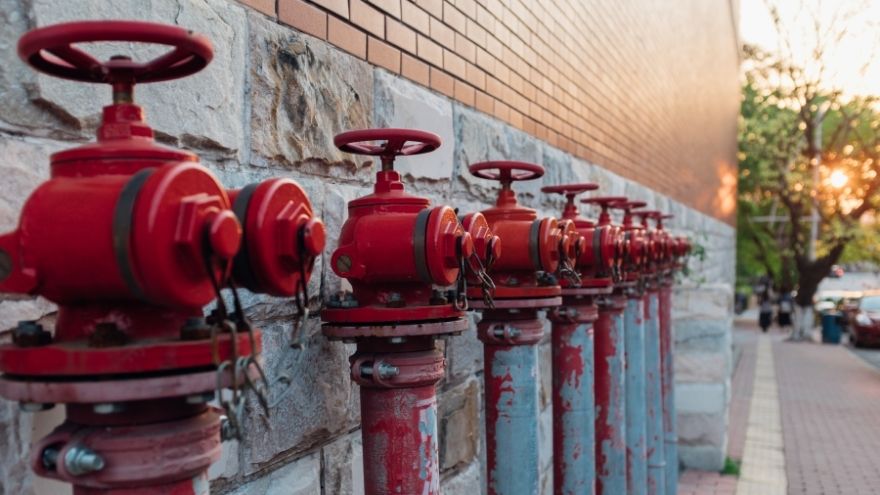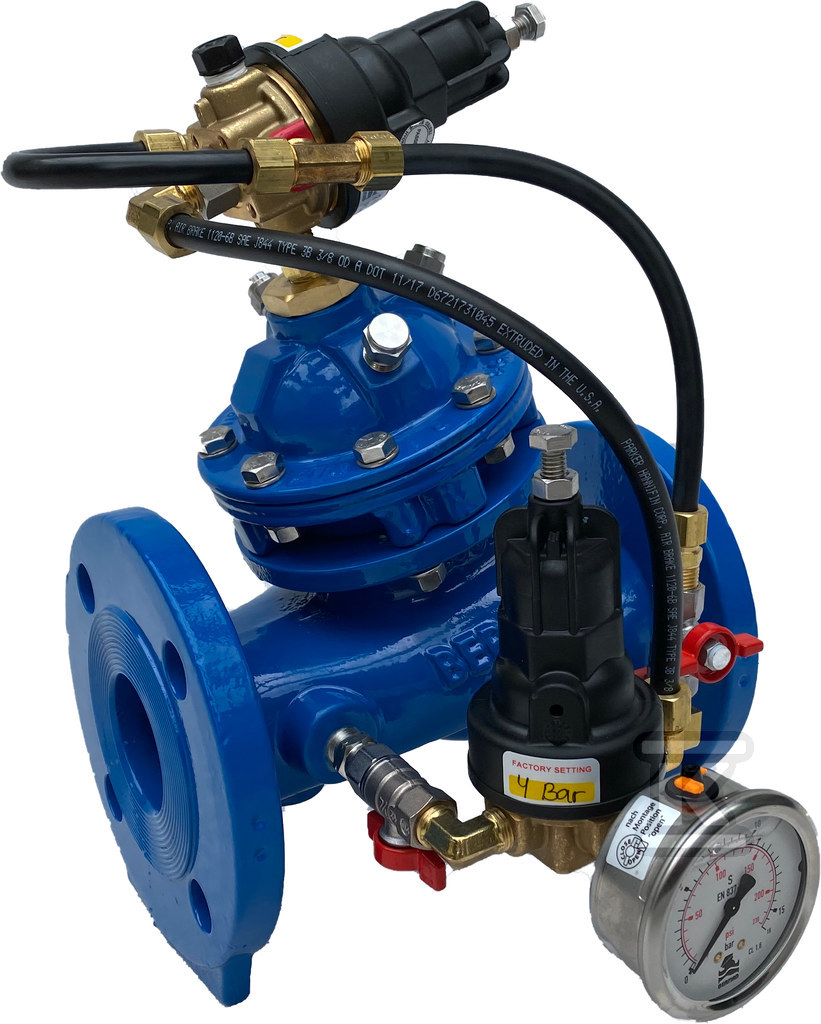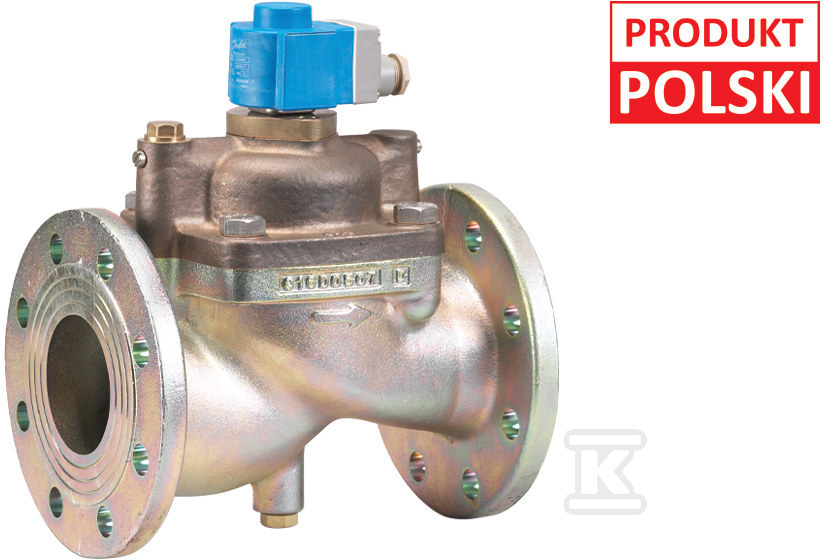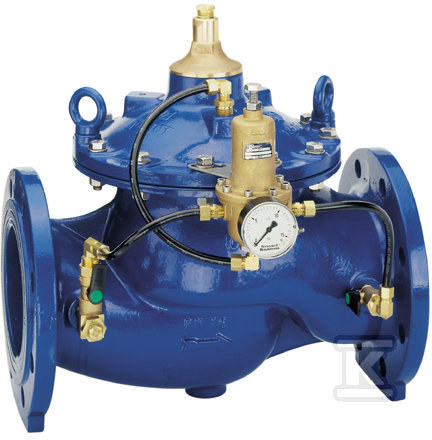Industrial buildings, such as industrial, warehouse or assembly halls, are definitely different from commercial buildings - office buildings, shopping malls or offices. Therefore, designing and implementing industrial fire protection systems requires a special approach and experience. Few companies know how to perform a fire protection system to ensure the safety of an industrial facility and to comply with applicable standards. We explain what requirements a hydrant system for the industrial sector must meet.

Check out fire protection installations at the Onninen wholesaler
Selection of fire protection to suit the requirements of an industrial building
Legal requirements regarding fire protection are included, among others, in the Act of 7 July 1994 - Building Law, in the Regulation of the Minister of Internal Affairs and Administration of 7 June 2010 on fire protection of buildings, other construction objects and areas and in the Regulation of the Minister of Infrastructure of 12 April 2002 on technical conditions to be met by buildings and their location. Unfortunately, the Polish legislator has not created separate guidelines for fire protection installations in warehouse and production buildings. Managers of industrial plants must therefore face a very difficult task...
 Selecting fire protection for an industrial building requires, above all, an individual approach – designing a personalized fire protection system with non-standardly placed extinguishing devices or fire sensors. This is necessary because industrial buildings are usually subject to regular reconstruction/expansion, are characterized by tight development, are equipped with numerous machines and devices, have areas with very limited access, etc.
Selecting fire protection for an industrial building requires, above all, an individual approach – designing a personalized fire protection system with non-standardly placed extinguishing devices or fire sensors. This is necessary because industrial buildings are usually subject to regular reconstruction/expansion, are characterized by tight development, are equipped with numerous machines and devices, have areas with very limited access, etc.
Therefore, there is no question of copying template solutions, as is often the case with simple and spacious commercial facilities. In addition, when designing a fire protection system, the fire hazard class to which a given industrial facility is classified must be taken into account, because it determines such parameters as the intensity of sprinkling or the area and minimum operating time. Specific, difficult working conditions (e.g. high dustiness) will also have a significant impact on how a fire protection installation should be constructed.
Hydrant installation in industrial facilities in the context of law
A fire hydrant system is one of the main elements of a building's fire safety system. The requirements for hydrant systems are specified in the aforementioned regulation on fire protection in buildings. Such an installation should be reliable and suitably efficient. It consists of hydrants placed both inside and outside buildings (e.g. external above-ground hydrant ).
 Hydrants are used to draw water from the water supply network when extinguishing a fire. The use of internal hydrants is mandatory in the indicated cases, and these devices must comply with Polish standards. The selection of hydrants depends on the specifics of the facility and on fire protection regulations. The regulations require that buildings be supplied with water for extinguishing fires, provided by the water supply network. In the event of an insufficient amount of water, an additional source of water for fire protection purposes should be provided.
Hydrants are used to draw water from the water supply network when extinguishing a fire. The use of internal hydrants is mandatory in the indicated cases, and these devices must comply with Polish standards. The selection of hydrants depends on the specifics of the facility and on fire protection regulations. The regulations require that buildings be supplied with water for extinguishing fires, provided by the water supply network. In the event of an insufficient amount of water, an additional source of water for fire protection purposes should be provided.
Polish law does not provide for separate regulations governing the principles of fire protection in industrial facilities. However, this topic is eagerly taken up by insurers, who very often refer to specific norms or standards (VdS, NFPA, FM Global, PN-EN) in their contracts, according to which a given fire protection installation should be made. While the design of hydrant installations in commercial buildings does not cause any major problems, in difficult industrial facilities the matter becomes more complicated. For this reason, both the design and implementation of a hydrant system should be entrusted to a company specializing in servicing the industrial sector.
Selection of appropriate protection for hydrant installations according to fire classification
Fire classification is the basis for effective protection against the spread of fire. The three commonly used fire classes are: EI 30, EI 60 and EI 120. They indicate the ability of a given structure or building material to delay fire for a specified period of time.
 Hydrant system pipes in places where they pass through building partitions that function as fire separation elements must be protected against the possibility of fire spreading. Hydrant and hydrant valve supply pipes may be made of non-flammable or flammable materials. The use of flammable materials requires the use of covers with a fire resistance class of EI 60 (the exception are risers running in stairwells separated by walls, closed with doors with a fire resistance class of at least EI 30). More information on protection can be found in the regulation on technical conditions.
Hydrant system pipes in places where they pass through building partitions that function as fire separation elements must be protected against the possibility of fire spreading. Hydrant and hydrant valve supply pipes may be made of non-flammable or flammable materials. The use of flammable materials requires the use of covers with a fire resistance class of EI 60 (the exception are risers running in stairwells separated by walls, closed with doors with a fire resistance class of at least EI 30). More information on protection can be found in the regulation on technical conditions.
Companies that design, build and service fire protection systems for various types of buildings are invited to familiarize themselves with the Onninen wholesale offer. Our product range includes a wide range of solutions in the field of fire protection and fire protection: from hydrants, through gas detectors, to complete fire protection systems .
Check out fire protection installations at the Onninen wholesaler